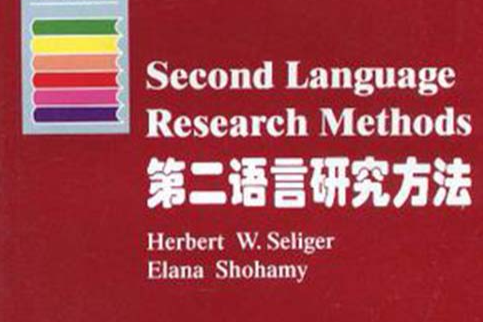《第二語言研究方法》是1999年由上海外語教育出版社出版的教材類書籍。
基本介紹
- 中文名:第二語言研究方法
- 作者:(美國)塞利格,(以色列)肖哈密
- 出版社:上海外語教育出版社
- 出版時間:1999年1月1日
- 頁數:270 頁
- 開本:32 開
- 裝幀:平裝
- ISBN:9787810465823
內容簡介,目錄,
內容簡介
《第二語言研究方法》的特點在於其實用性,著重培養動手能力。與偏重理論研究的傳統語言學或教育學專著相比,書中向讀者介紹的第二語言研究方法易於掌握,可操作性強,在一定意義上可謂提供了“手把手”的教學。作者的構思獨具匠心。讀者可通過書中介紹的示範性研究方法得到感性認識,從而學會如何在不同的環境中、不同年齡的對象中著手進行針對性的研究。作者在每一章的結尾都根據本章的中心思想精心設計了練習題,而且附上簡明扼要的小結和參考書目,使讀者進一步明確本章的要點,鞏固所學的知識。
目錄
Acknowledgments
Introduction
Chapter 1 What is research?
Introduction
Research as a natural process
Scientific research and common sense
Finding answers: How do we know something?
Basic, applied, and practical research
Summary
Activities
References
Chapter 2 A paradigm for second language research
Research and the phenomena of second language
Four parameters for second language research
Parameter 1: Syfithetic and analytic approaches
Parameter 2: Heuristic and deductive objectives
Parameter 3: Control and manipulation of the research context
Parameter 4: Data and data collection
Summary
Activities
References
Chapter 3 The preparatory stages of research
Introduction
Where do research questions come from?
Phase 1: The general question
Phase 2: Focusing the question
Phase 3: Deciding on an objective or purpose
Phase 4: Formulating the research plan or the
hypothesis
Summary
Activities
References
Chapter 4 Contextualization of research
The what and why of contextualization
Locating the sources for the literature review
Reading the literature
Organizing and reporting the review of the literature
Summary
Activities
References
Chapter 5 The components of research
The need for a plan
The research plan and the type of research
Making predictions and controlling variables
Making the research more effective
Types of data and variables
Internal and external validity
Summary
Activities
References
Chapter 6 Research design: qualitative and
descriptive research
Introduction
Qualitative research
Descriptive research
Multivariate and correlational research
Summary
Activities
References
Chapter 7 Research design: experimental research
Introduction
The major components of experimental research
Single group designs
Designs using control groups
Factorial designs
Quasi-experimental designs
Separate sample designs
Summary
Activities
References
Chapter 8 Data and data collection procedures
Introduction
The data collection parameter
Description of data collection procedures
Assuring the quality of the data and the
data collection procedures
Using, adapting, and developing data collectior procedures
Summary
Activities
References
Chapter 9 Analyzing the data
Data analysis and the design of the study
Analyzing qualitative research data
Analyzing descriptive research data
Analyzing correlational research data
Analyzing multivariate research data
Analyzing experimental research data
Using the computer for data analysis
Summary
Activities
References
Chapter 10 Putting it all together
Reporting, summarizing, and interpreting the results
Reporting research
Closing the research cycle?
Summary
Activities
References
Appendix References for further reading
Index

